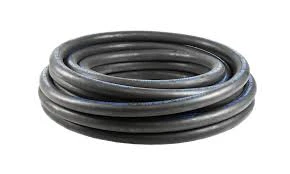power steering hose line
Understanding Power Steering Hose Lines A Key Component for Vehicle Performance
Power steering systems have become an essential feature in modern vehicles, enhancing maneuverability and driving comfort. At the core of these systems are power steering hose lines, which play a vital role in fluid transfer and overall system efficiency. In this article, we will explore the importance of power steering hose lines, their types, maintenance, and the impact they have on vehicle performance.
What are Power Steering Hose Lines?
Power steering hose lines are crucial components that transport hydraulic fluid between the power steering pump and the steering gear. These hoses allow the system to function, providing the necessary pressure to assist drivers in turning the steering wheel with ease. Without these hoses, the power steering system would be unable to generate the required force, making it difficult for drivers to control their vehicles.
Types of Power Steering Hose Lines
There are generally two types of power steering hose lines high-pressure and low-pressure hoses.
1. High-Pressure Hose This hose is responsible for delivering fluid from the pump to the steering gear under high pressure. Typically made from durable materials that can withstand significant internal pressure, high-pressure hoses are reinforced with layers of fabric or rubber to prevent bursting.
2. Low-Pressure Hose In contrast, low-pressure hoses carry the returning fluid back to the reservoir. While they operate at lower pressures compared to high-pressure hoses, they still need to be robust enough to handle the fluid dynamics of the steering system.
Both types of hoses are engineered for flexibility and durability, ensuring they can withstand the fluctuations of temperature and pressure that occur during regular driving conditions
.power steering hose line

Importance of Maintenance
Proper maintenance of power steering hose lines is essential for the longevity and performance of your vehicle. Over time, wear and tear can lead to leaks, cracks, or complete hose failure. Common signs of hose problems include steering wheel stiffness, whining noises when turning, or visible fluid leaks beneath the vehicle. Regular inspections can help identify issues before they lead to more serious problems.
Replacing a damaged hose can prevent further damage to the power steering pump and steering gear, which can be costly to repair. It is advisable for vehicle owners to consult their owner's manual for recommended maintenance schedules or have their vehicles checked by a professional mechanic for any signs of wear.
Impact on Vehicle Performance
The condition of the power steering hose lines directly affects vehicle performance. A malfunctioning hose can lead to inadequate fluid pressure, making steering difficult and potentially unsafe. This not only compromises comfort but can also pose significant safety risks, especially in emergency situations.
Moreover, the efficiency of the power steering system impacts fuel consumption as well. An inefficient system, caused by power loss through damaged hoses or leaks, can lead to increased engine workload, resulting in higher fuel usage.
Conclusion
In summary, power steering hose lines are integral to the functionality of a vehicle's steering system. Understanding their role, types, and maintenance requirements allows vehicle owners to ensure safe and efficient driving experiences. Regular checks and timely replacements of damaged hoses can significantly extend the life of the power steering system and enhance overall vehicle performance. By prioritizing the maintenance of these components, drivers can enjoy the comfort and safety that modern power steering technology has to offer.
-
Ultimate Spiral Protection for Hoses & CablesNewsJun.26,2025
-
The Ultimate Quick-Connect Solutions for Every NeedNewsJun.26,2025
-
SAE J1401 Brake Hose: Reliable Choice for Safe BrakingNewsJun.26,2025
-
Reliable J2064 A/C Hoses for Real-World Cooling NeedsNewsJun.26,2025
-
Heavy-Duty Sewer Jetting Hoses Built to LastNewsJun.26,2025
-
Fix Power Steering Tube Leaks Fast – Durable & Affordable SolutionNewsJun.26,2025

